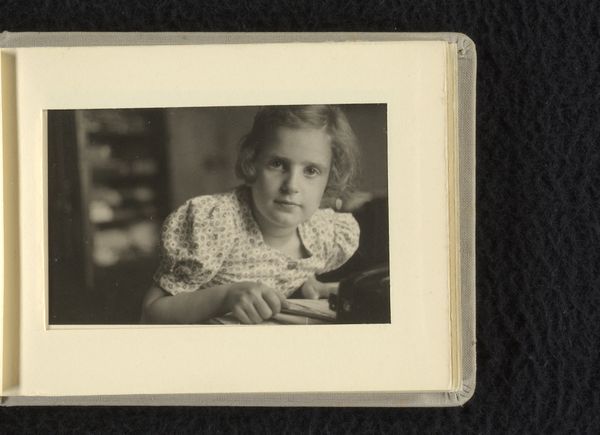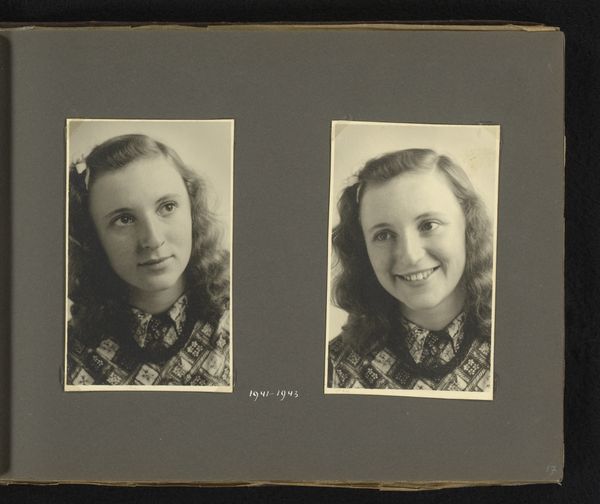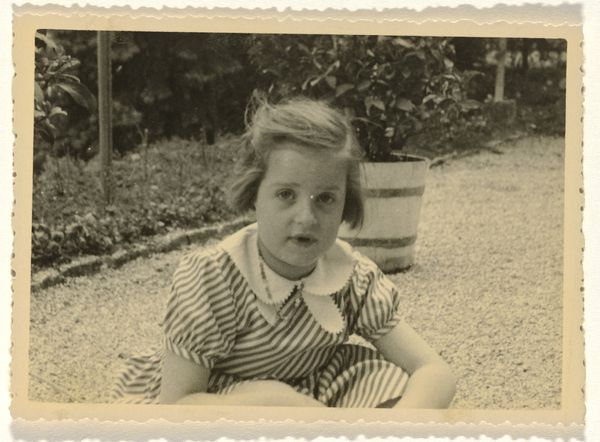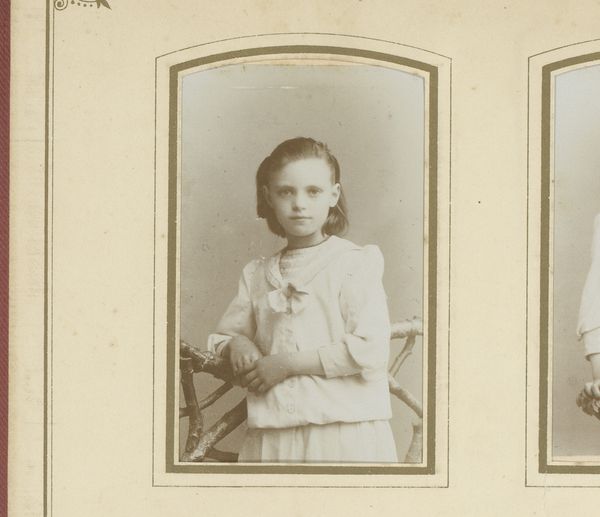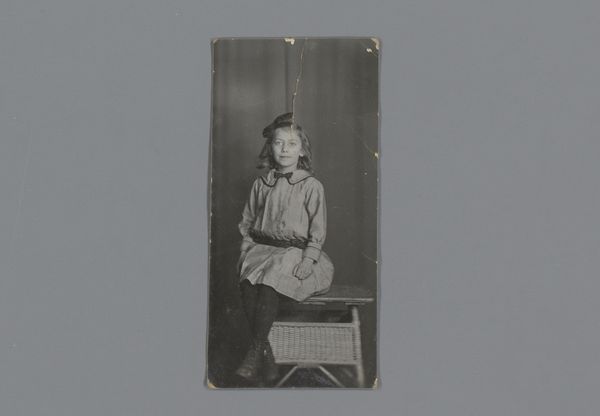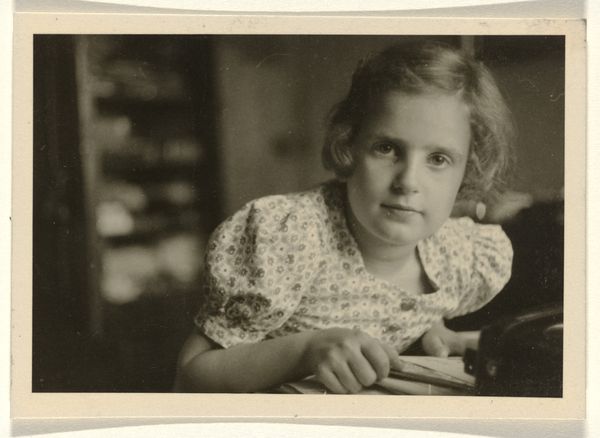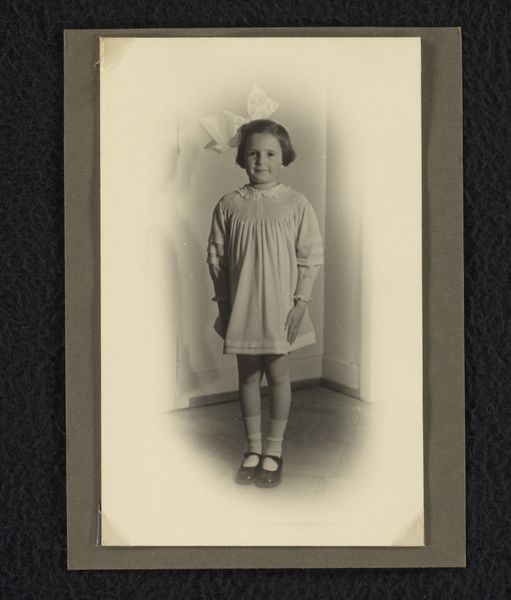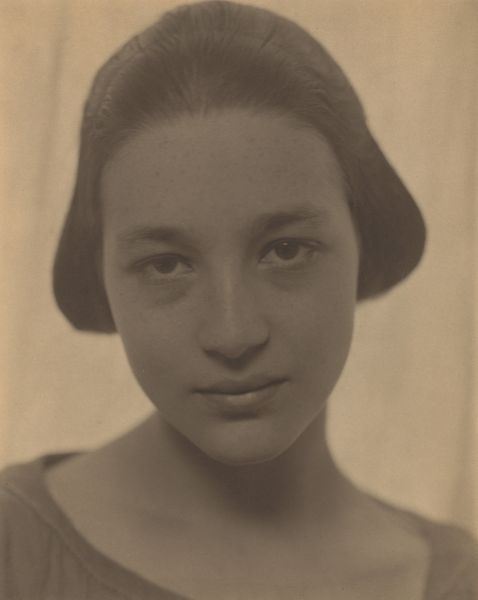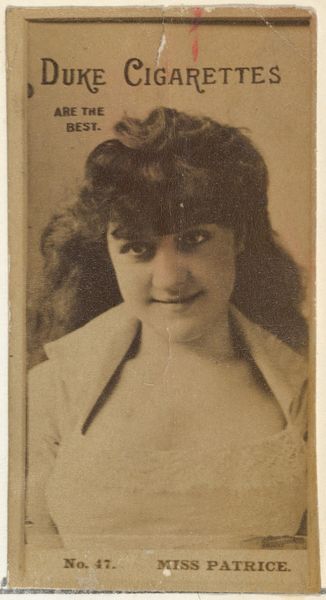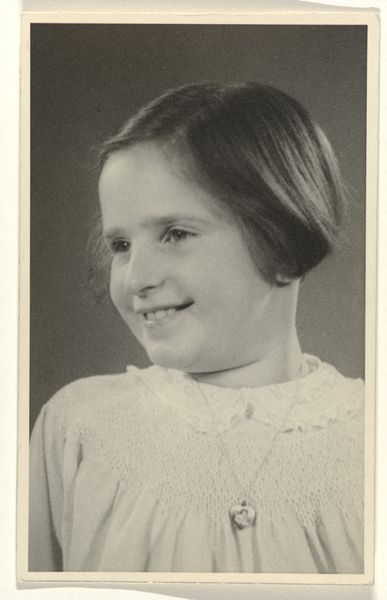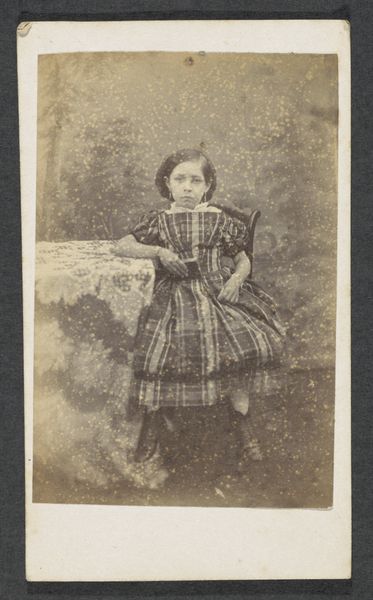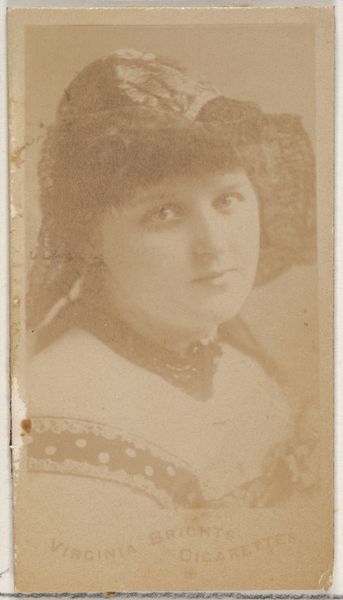
photography
#
portrait
#
self-portrait
#
photography
Dimensions: image: 11.8 × 9.3 cm (4 5/8 × 3 11/16 in.) sheet: 12.3 × 9.5 cm (4 13/16 × 3 3/4 in.)
Copyright: National Gallery of Art: CC0 1.0
Curator: Here we have a photograph titled "Anne Frank," taken in 1939. The medium is photography. Editor: It hits me with a wave of delicate sadness, you know? That young face, there's this knowingness, a shadow in her eyes that just aches. Curator: Yes, that shadow is striking given what we know of her fate. The photograph itself functions almost as a secular icon, her image becoming synonymous with the suffering of the Holocaust, especially youth innocence. Editor: Absolutely. But it’s also this beautifully ordinary portrait of a young girl. It makes you think about the interrupted life that could have been, all those small, daily moments of a young woman becoming herself. It amplifies the tragedy. Curator: I agree. Even the simplicity of the image itself—the dress, the simple hairstyle—lends to its iconic power. There's a vulnerability that pierces through time and history. Editor: Funny, I also keep getting snagged on the amateur, home-movie feel of it all, like a fleeting memory resisting the grand narratives history throws at it. Curator: And this type of portrait served a specific purpose during this period; family images acted as objects of stability as their cultural memory was under immense pressure. It grounds these iconic people, like Anne Frank, in intimate spaces. Editor: Right. It’s a quiet resistance, I suppose. Seeing Anne as just a young girl, radiant even with the shadow in her eyes. Makes you think. Curator: It does, profoundly. Thank you for your perspective. Editor: Thanks, always a pleasure to dive deep and reflect on these significant figures.
Comments
No comments
Be the first to comment and join the conversation on the ultimate creative platform.
